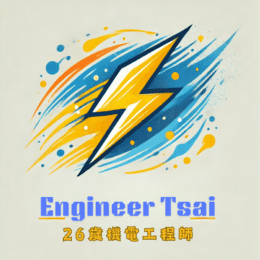Watch Now: How Magnetic Fields and Electric Currents Interact!
Explore the core principles of electromagnetism, including Ampère’s Law and electromagnetic induction. Through clear demonstrations, learn how electric currents generate magnetic fields and how changing fields induce currents—key concepts behind motors, generators, and wireless charging!
Fundamentals of Magnetic Fields and Electric Currents
In electromagnetism, electric currents and magnetic fields are closely connected. According to Ampère’s Law and Faraday’s Law of Induction, an electric current generates a magnetic field, while a changing magnetic field can induce a current.
How Does an Electric Current Create a Magnetic Field? – Ampère’s Law
When current flows through a conductor, it produces a surrounding magnetic field. This phenomenon is described by Ampère’s Law, and its direction can be determined using the right-hand rule:
- Point your thumb in the direction of the current, and your curled fingers will indicate the direction of the magnetic field.
Applications:
- Electromagnets: Generate strong magnetic fields when energized, used in motors, magnetic cranes, and relays.
- Coiled Conductors: Increasing the number of turns in a coil amplifies the magnetic field, essential in transformers, electric motors, and generators.
How Does a Magnetic Field Generate a Current? – Faraday’s Law of Induction
A changing magnetic field can induce an electric current in a nearby conductor, a principle known as electromagnetic induction, which is the foundation of power generation and wireless energy transfer.
Key Points:
- A changing magnetic field generates an electromotive force (EMF), driving current in a circuit.
- The Lenz’s Law states that the induced current’s magnetic field will oppose the original change in the magnetic field.
Applications:
- Generators: Convert mechanical energy into electrical energy by inducing current in coils, used in power plants, wind turbines, and automotive alternators.
- Wireless Charging: Alternating magnetic fields generate current in receiver coils, enabling contactless charging for smartphones and electric vehicles.

Applications of Magnetic Fields and Electric Currents
1. Electric Motors: Converting Electric Current into Motion
Electric motors use magnetic fields generated by current to create mechanical motion, a key process in converting electrical energy into kinetic energy. The fundamental principle relies on the interaction between the magnetic field and electric current, producing rotational torque.
Common Applications:
- Fans, electric vehicles, industrial machinery
- Electromagnetic-driven mechanical equipment
2. Generators: Converting Magnetic Fields into Electricity
Generators work on the opposite principle of motors, using changing magnetic fields to induce electric currents. This process converts mechanical energy into electrical energy.
Common Applications:
- Hydroelectric, wind, and gas-powered generators
- Automotive alternators
3. Transformers: Adjusting Voltage Levels
Transformers utilize electromagnetic induction to step up or step down voltage, making them essential for power distribution and electronic devices.
Common Applications:
- Household power adapters
- High-voltage transmission systems
4. Wireless Charging Technology
By generating alternating magnetic fields, wireless charging systems induce current in a receiver coil, enabling contactless power transfer.
Common Applications:
- Wireless charging for smartphones
- Inductive charging stations for electric vehicles

Simple Experiments: Observing the Interaction Between Magnetic Fields and Electric Currents
You can conduct these simple experiments to better understand the relationship between magnetic fields and electric currents.
Experiment 1: How Electric Current Creates a Magnetic Field
Materials:
- Battery
- Copper wire
- Small compass
Steps:
- Wrap the copper wire around the battery terminals to form a closed circuit.
- Bring the compass close to the wire and observe if the needle deflects due to the generated magnetic field.
- Reverse the direction of the current and note whether the compass needle moves in the opposite direction.
Experiment 2: How Magnetic Fields Induce Electric Currents
Materials:
- Magnet
- Coil (copper wire wound into a loop)
- Voltmeter
Steps:
- Quickly move the magnet through the coil and observe voltage changes on the voltmeter.
- Change the speed at which you move the magnet to see if the induced voltage increases.
- Increase the number of wire loops in the coil and observe whether the induced voltage becomes stronger.
These hands-on experiments provide a clear demonstration of the interaction between electricity and magnetism, reinforcing the principles of electromagnetism and electromagnetic induction.

Summary & Further Reading
The interaction between magnetic fields and electric currents is fundamental to electromagnetism, influencing technologies such as generators, motors, transformers, and wireless charging. By understanding Ampère’s Law and Faraday’s Law of Electromagnetic Induction, we can better grasp electromagnetic phenomena and apply them to modern technology.
Further Reading
📌 “Ampère’s Law: Unveiling Current’s Magnetic Secrets”
Learn how electric currents generate magnetic fields and their applications in motors and electromagnets.
📌 “How Electromagnetic Wave and Electricity Shape Modern Technology”
Explore Faraday’s Law of Electromagnetic Induction and how it enables generators and wireless charging technology.
📌 “The Future of Wireless Charging: Advancements in Power Transmission” (Coming Soon)
An in-depth look at the evolution of wireless charging and its growing role in daily life.
📌 “How Do Transformers Work? The Science Behind Voltage Conversion” (Coming Soon)
Discover how transformers use electromagnetic induction to regulate voltage and improve power transmission efficiency.
💡 Got thoughts or questions? Share them in the comments! Want to learn more about electromagnetism? Subscribe to our blog for the latest updates on technology and innovations! 🚀


